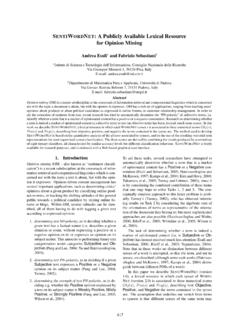Transcription of The MACHINE LEARNING Primer - SAS
1 PrimerThea SAS Best Practices e-bookby Kimberly NevalaLEARNINGMACHINET able of Contents1. MACHINE LEARNING Defined ..3 Do Machines Learn? ..5 Problems that Lend Themselves to MACHINE LEARNING ..82. The Basic Techniques ..13 The 4 Types of LEARNING ..14 Hot Topics ..193. Points to Ponder ..224. Best Practices ..295. Are You Ready for MACHINE LEARNING ? (A Checklist) ..471 MACHINE LEARNING Defined4A MACHINE LEARNING Primer : MACHINE LEARNING Definedmachine \m - sh n\ a mechanically, electrically, or electronically operated device for performing a \ l rniNG\ the activity or process of gaining knowledge or skill by studying, practicing, being taught, or experiencing MACHINE LEARNING Primer : MACHINE LEARNING Deffined5 DoMachinesLearn?
2 Yes! Machines learn by studying data to detect patterns or by applying known rules to: Categorize or catalog like people or things Predict likely outcomes or actions based on identified patterns Identify hitherto unknown patterns and relationships Detect anomalous or unexpected behaviors The processes machines use to learn are known as algorithms. Different algo-rithms learn in different ways. As new data regarding observed responses or changes to the environment are provided to the MACHINE the algorithm s performance improves. Thereby resulting in increasing intelligence over MACHINE LEARNING Primer : MACHINE LEARNING DeffinedWith the advent of big data, both the amount of data available and our ability to process it has increased exponentially.
3 The ability of machines to learn and thus appear ever more intelligent has increased proportionally. Even so, machines aren t independent thinkers (yet).Yes, MACHINE LEARNING may identify previously unidentified opportunities or problems to be solved. But the MACHINE is not autonomously creative. The MACHINE will not spontaneously develop new hypotheses from facts (data) not in evidence. Nor can the MACHINE determine a new way to respond to emerging stimuli. Remember: the output of a MACHINE LEARNING algorithm is entirely dependent on the data it is exposed to. Change the data, change the Are Machines Creative?OrIndependently Intelligent?7A MACHINE LEARNING Primer : MACHINE LEARNING DeffinedCASE IN POINTC ompanies are better than ever at understanding why customers buy their products, use their services, or engage their expertise.
4 We can point the MACHINE at a lake of consumer data to detect patterns and preferred channels for consumption. It can use historical and real-time data to deter-mine that I, a frequent business traveler and coffee addict, may welcome a real-time message that my favorite coffee shop is around the corner. My dad would not welcome this interaction. He brews his coffee at home and will respond to a coupon in the mail. Which can also include incentives for other items he might buy on his next grocery outing. The MACHINE is optimizing activities for each customer across known channels (digital, paper, brick and mortar). It won t, however, independently create a new interaction channel that doesn t already exist.
5 Personalized Marketing8A MACHINE LEARNING Primer : MACHINE LEARNING DeffinedIn simple terms, MACHINE LEARNING is particularly suited to problems where: Applicable associations or rules might be intuited, but are not easily codified or described by simple logical rules. Potential outputs or actions are defined but which action to take is dependent on diverse conditions which cannot be predicted or uniquely identified before an event happens. Accuracy is more important than interpretation or interpretability. The data is problematic for traditional analytic techniques. Specif-ically, wide data (data sets with a large number of data points or attributes in every record compared to the number of records) and highly correlated data (data with similar or closely related values) can present problems for traditional analytic Lend Themselves to MACHINE Learning9A MACHINE LEARNING Primer .
6 MACHINE LEARNING DeffinedCASE IN POINTA practiced MACHINE LEARNING algorithm could recognize the face of a known person of interest in a crowded airport scene, thereby preventing the person from boarding a flight or media platforms utilize MACHINE LEARNING to automatically tag people and identify common objects such as landmarks in uploaded photos. Why Is This a MACHINE LEARNING Problem? Image data is complicated. The number of pixels in each image make the data set wider than it is deep. Pixels close to one another have similar values making the data highly correlated. Images of the same subject have multiple subtle (and not-so-subtle) variations. Of course, you can easily recognize people known to you - and those that aren t in pictures; even when they have different expressions, poses or clothes.
7 You can also identify like items both concep-tually ( , animal, mineral or vegetable) and concretely ( , dog, cat, fish). But can you translate that knowledge into simple steps and discrete rules for how you made the match? Identifying People and Things In Pictures 10A MACHINE LEARNING Primer : MACHINE LEARNING DeffinedCASE IN POINTM achine LEARNING can help discover what genes are involved in specific disease pathways. MACHINE LEARNING can also be used to determine which treatments will be most effective for an indi-vidual patient based on their genetic makeup, demographic and psychographic characteristics. Why Is This a MACHINE LEARNING Problem? Genomic data is wide: every person has more than 20,000 genes.
8 As a result, the number of genes (data points) in an individual record is always larger than the number of people (records) in any data set. A number of factors add to the complexity. Including, but not limited to: the high degree of varia-tion within each of those 20,000+ genes. The fact that your relatives have similar genomes (making them highly correlated). That relatively few individuals may suffer from a given disease making the data pool extremely shallow. Last but not least, genes in isolation may not predict health outcomes or disease expression. Biochemical, environmental and other factors must also be considered, thereby requiring integrated data from multiple, diverse sources.
9 Genomics11A MACHINE LEARNING Primer : MACHINE LEARNING DeffinedCASE IN POINTM achine LEARNING can identify the best routes from point A to B, predict transit conditions and travel time and predict the best route based on current, evolving road LEARNING can drive a car without requiring input from a driver. Why Is This a MACHINE LEARNING Problem? Driving is a complicated but well-bounded problem. There are, in fact, a limited number of actions a vehicle may take: start, stop, go forward, go backward, turn, speed up and slow down. However, the decision to take any of action is influenced by numerous factors including but not limited to road conditions, weather conditions, presence and behavior of other vehicles, two-legged persons and their four-legged friends, and the rules of the road just to name a few.
10 While a human driver instinc-tually assesses all these inputs on the fly, capturing discrete rules for every possible combination is impossible. Navigation and the Self-Driving Car12A MACHINE LEARNING Primer : MACHINE LEARNING DeffinedCommon ApplicationsRESOURCEFRAUD DETECTIONPROACTIVE MAINTENANCESELF-DRIVING CARSDETECT EARLY ONSET OPTIMIZATIONOF INFECTION HIGH VOLUME TRADINGFACIALRECOGNITIONVIRTUAL ASSISTANTSPEOPLE LIKE Basic Techniques214A MACHINE LEARNING Primer : The Basic TechniquesThe 4 Types of MACHINE LearningSemi-supervisedUnsupervisedReinf orcementSupervised15A MACHINE LEARNING Primer : The Basic TechniquesSupervised LearningIn supervised LEARNING the MACHINE is taught by example.

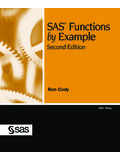




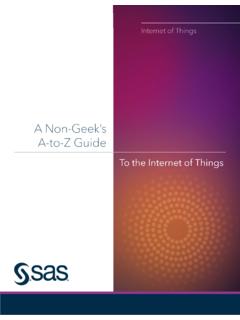
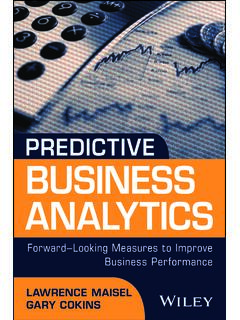
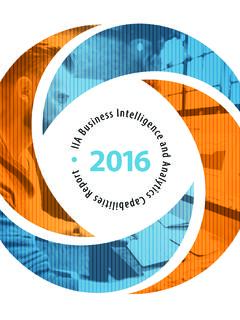
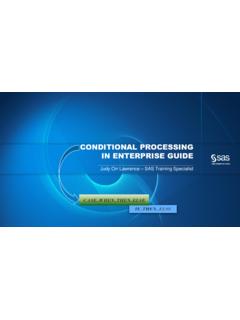


![A arXiv:1609.02907v4 [cs.LG] 22 Feb 2017](/cache/preview/a/9/c/1/c/7/5/1/thumb-a9c1c751788824cc5937d721509f8333.jpg)



